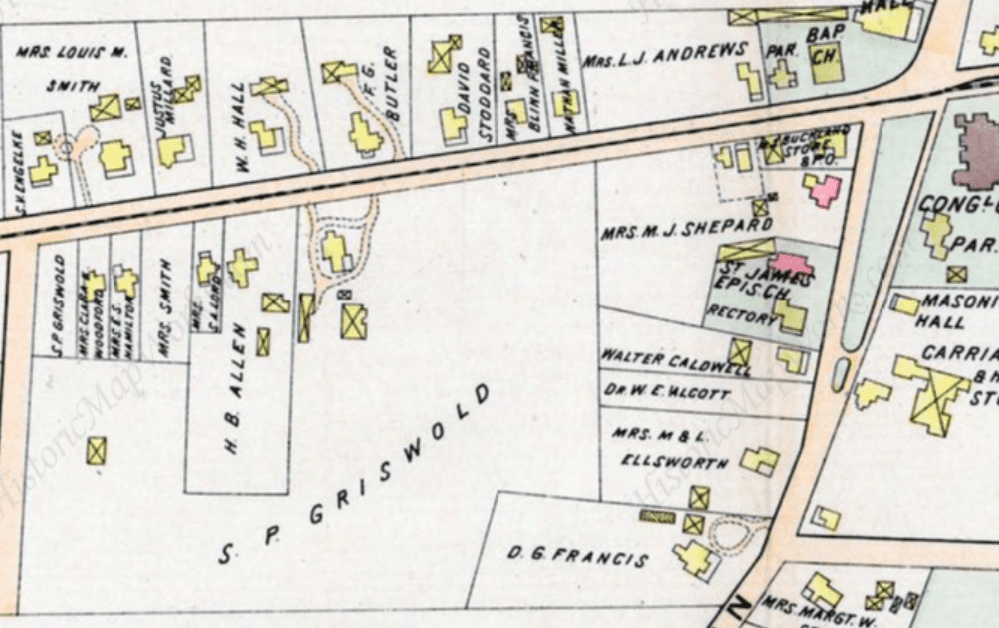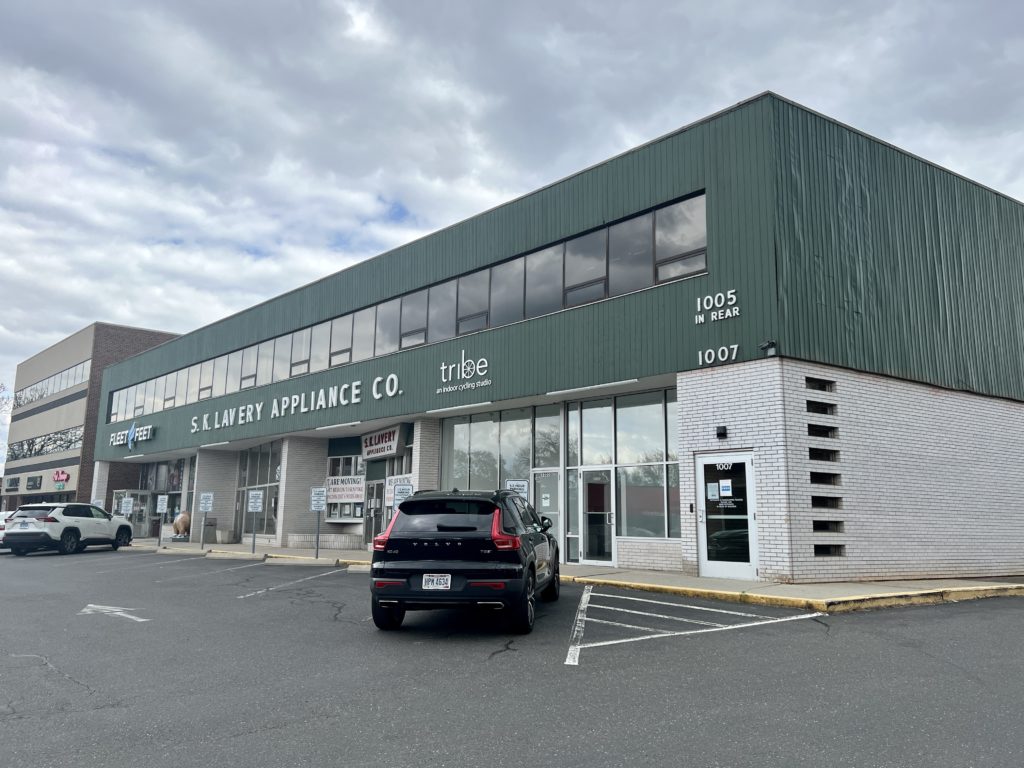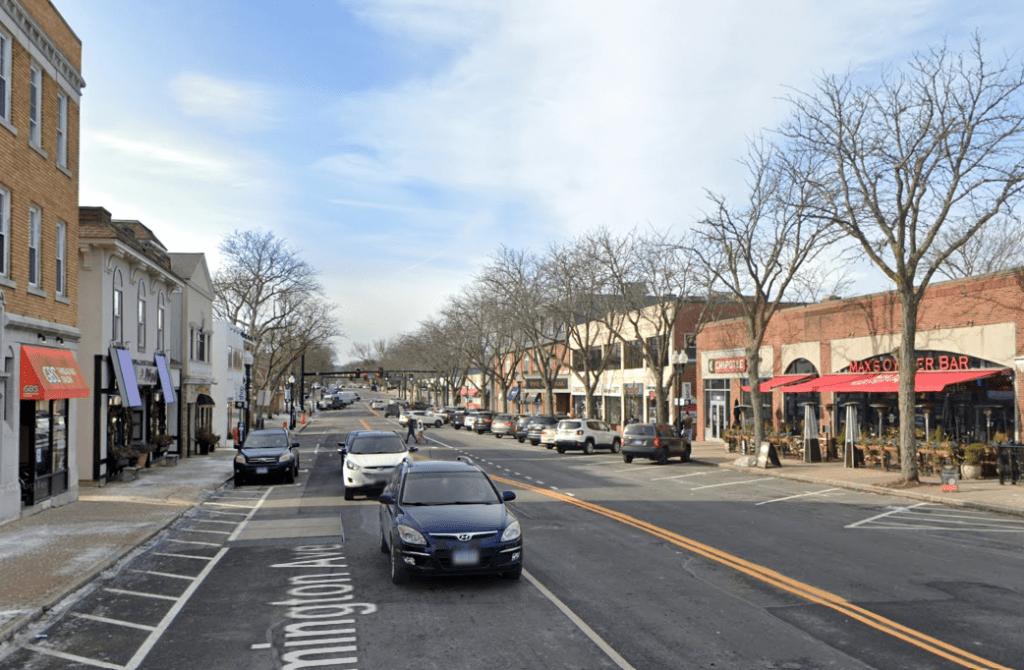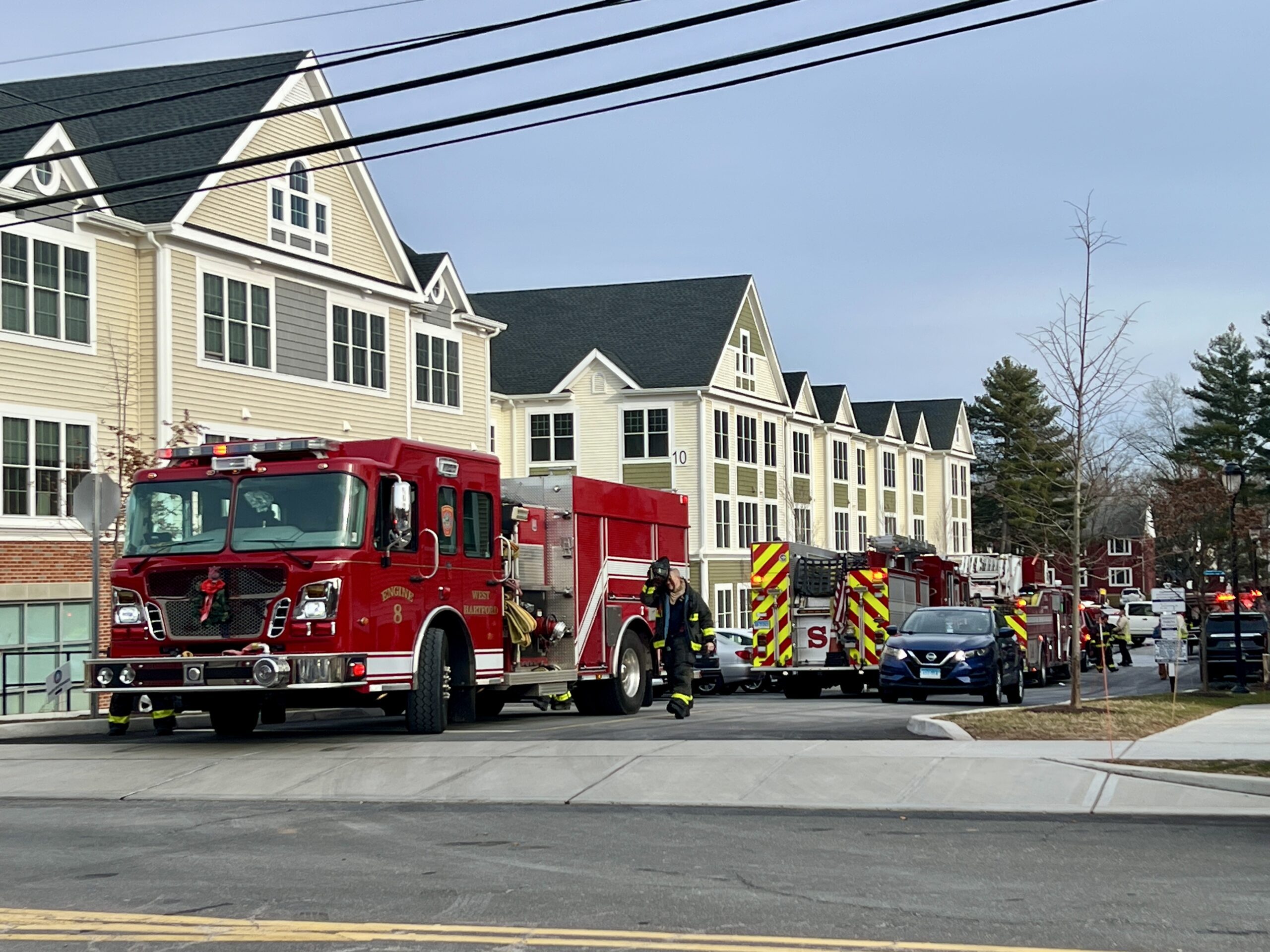From the West Hartford Archives: Farmington Avenue West of Main Street

Audio By Carbonatix

Farmington Avenue in the early 1900s, looking west from Main Street. Photo courtesy of Noah Webster House & West Hartford Historical Society
Historian Jeff Murray takes a look into West Hartford’s past to uncover some surprising information, stir up some memories, or reflect on how much life has changed – or hasn’t changed at all. Enjoy this week’s ‘From West Hartford’s Archives’ …
By Jeff Murray
Farmington Avenue is shown here in the early 1900s, looking west from Main Street.
According to William Hall, Farmington Avenue officially opened through West Hartford in 1800 along an old cart path used by farmers to head west. It is clear that its intersection with Main Street had been important since nearly the beginning of West Hartford’s settlement. Main Street from north to south had been established since at least the early 1700s and the first Congregational Church buildings were centered here.
Farmington Avenue’s path through the middle of the parish gave it geographical significance that made it the main road it is today. The original lots (so-called “long lots” assigned to those from Hartford extended east to west, meaning single owners retained property along an entire section of where Farmington Avenue would be rather than individual lots north to south.
Therefore, when Farmington Avenue was finally laid out, it cut diagonally through the Deming farm. It was not straight, however, and curved around a number of houses west of the Center. The same treatment was given to houses already built along what would become Main Street and helps explain why the road curves at specific points, like south of Park Road and north of Bishop’s Corner.
At the time of West Hartford’s independence in 1854, there were just two houses on the south side up to Mountain Road – the Selden house and the Deming house, the only one close to the Center. Walter Deming was the proprietor of a tavern on the north side of the road near the intersection and his son, James Brace Deming, inherited it.
When he died unmarried in 1885, James was the only one left in the family who was still alive and lived locally. His sister Amelia had married and moved to Chicago. A few years before his death, James moved to the Retreat in Hartford and sold the whole 40-acre farm to Seth P. Griswold. Therefore, the farm passed from the Deming family, who had owned it for three generations, to another notable group in town.
The Griswolds owned the historic homestead off Fern Street and North Main Street, so Seth’s purchase of this farm in the Center joined the property his sister Mary owned along South Main Street. With this new land, Griswold and his son Allen spent decades carving out LaSalle Road, Arapahoe Road, Woodrow Street, and Four Mile Road. How would the south side of Farmington Avenue look today if it had stayed in the Deming family?
The 1890s saw the construction of several houses on both sides of Farmington Avenue and some of these can be seen in the photograph. They were built during and just after the introduction of the electric trolley road pushed through in 1894.
While West Hartford Center was the institutional heart of the town, the wealth was concentrated in the east end near Prospect Avenue. The trolley line helped bring in Hartford residents who wanted to be farther out in the “country” but close enough to the Center.
For example, Hyman Smith, who ran a large grocery store in the city, bought a lot in this section and built a house. He delegated the running of his branch store on South Main Street to his son-in-law Myron J. Burnham, who grew the business aggressively and became a household name until it closed in the 1950s. William Hall, first principal of the West Hartford High School and longtime superintendent of schools, lived nearby.
Many of the Center’s first stores at the intersection were managed by people who lived next door or a short walk away. And a few of the original owners of the cottages built on the north side in the 1890s would be the same ones to sell their properties to real estate developers when the Central Theater was built in the 1920s.

Map from 1896 of Farmington Avenue west of Main Street
This photograph was taken more than a hundred years ago, but many of the property lines in early maps are the same today. For example, Horace Allen bought nearly double the amount of land as his neighbors at 1013-1019 Farmington Avenue. The house on this land at 1003-1007 Farmington Avenue was occupied by the same family for decades and then it was moved to the west in 1953 to make way for a shopping center that is still there today.
The extra land that Horace Allen had purchased in the 1890s was perfect for use as a parking lot for the commercial block. It is interesting that the owners of the land when the store went up were Samuel K. Lavery, who founded S. K. Lavery Appliance Company, and Bradford A. Griswold, the grandson of Seth Griswold. There is something poetic about a property in the 1950s owned by the grandson of the man who bought almost all of the south side of Farmington Avenue in the 1880s.

1003-1007 Farmington Avenue in 2023. Photo credit: Ronni Newton
The Griswold family is responsible for a significant amount of the development of this area, but individual landholders made decisions more than a century ago that cemented the layout we are familiar with today. I could list out other examples, but it is remarkable to think that the outcome of how the Center will be modified and worked out over the next several years will show up the same way in the 2150s.
This snapshot of Farmington Avenue west of Main Street is a window into decades of development, even if it’s a simple street view.

Street view of Farmington Avenue, looking west from Main Street. Google Street view
Jeff Murray was born and raised in West Hartford and has been involved with the Noah Webster House & West Hartford Historical Society since 2011 when he was a high school student and won the Meyer Prize for his essay on local history. Jeff routinely volunteers as local history researcher uncovering information for numerous museum programs such as the West Hartford House Tour and West Hartford Hauntings. Jeff works as a data analyst at Pratt & Whitney.
Like what you see here? Click here to subscribe to We-Ha’s newsletter so you’ll always be in the know about what’s happening in West Hartford! Click the blue button below to become a supporter of We-Ha.com and our efforts to continue producing quality journalism.



